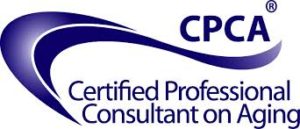Written by Hannah MacDonell and Peyton Rowe, 3rd year nursing students at St. Lawrence College/Laurentian University
Functional Analysis and IADLs Maintenance in Older Adults
In Canada, unsteady gait resulting in falls is the leading cause of injury-related hospitalizations and deaths among people aged 65 and older (Government of Canada, 2022). Injuries from falls reduce older adults’ quality of life, increase caregiver demands, and precipitate admissions into long-term care. The cost of treating fall-related injuries is high and will continue to increase as the population continues to age (Government of Canada, 2022). Therefore, fall prevention should be a public health priority. A substantial amount of research on fall prevention strategies and methods of monitoring functional status has been done to address this issue. The aim of this paper is to determine whether functional analysis helps maintain instrumental activities of daily living (IADLs) in independent older adults over the age of 65. The answer to this question will be determined by comparing and contrasting the design and outcomes of multiple studies, and analyzing fall prevention data collected from various community health organizations. The reasons for maintaining functional status will also be emphasized for both the older adult population and the healthcare system.
Background
Many of the articles being examined use terms such as functional analysis and IADLs. Functional analysis can be defined as the assessment of functional abilities used to determine the level of independence an older adult can maintain while completing activities of daily living (ADLs) (Camino & Mioshi, 2017). These daily activities may include getting dressed, feeding and toileting themselves, etc. IADLs, or instrumental activities of daily living, are the more complex activities people do everyday to take care of themselves and their home. These activities require more complex thinking and planning than the basic care tasks included in ADLs. Examples of IADLs include using a phone, transportation, paying bills, etc. (Guo & Sapra, 2022).
Intervention Comparison
Aging is typically accompanied by physical and cognitive decline, leading to limitations in ADLs, which jeopardize older people’s functioning, independence and quality of life (Jonkman, 2019). Multiple studies discussing the functionality of older adults and fall prevention were reviewed. An overarching theme among these articles is the concept of aging in place. Aging in place means having the health and social support needed to live safely and independently at home or in the community as long as one wishes and is able (Government of Canada, 2016). The four pillars of aging in place include medication compliance, mobility, nutrition, and social engagement (Hülpr, 2022). When one or more of these four pillars become unstable, often the only option the older person has is to move into the hospital or a long-term care facility. Therefore, one’s functionality is heavily based on their ability to independently meet the four pillars of aging in place, and complete ADLs and IADLs. In a study by Jonkman et al. (2019), participants were assessed on their ability to get dressed and undressed, sit down and stand up, use their own or public transportation, walk up and down stairs without resting, and walk outside for 400m for five minutes without stopping. This was done over a three year period. Upon follow up, 22.3% of participants showed functional decline by year three. Similar results were seen in Gillian et al. (2019) when assessing gait patterns, IADLs, and ADLs in healthy older adults. In this two-year long study, it was found that dual task walking (DTW) (where the individual is doing another task while walking) was significantly associated with higher risk of falls. This indicates that lack of concentration on walking increases the incidence of falls. Although this data can be used to prevent falls, ethical implications were present because, according to the study design, the participants had to fall for data to be collected.
Song and Boo (2022) took a different approach to prevention. Instead of focusing on preventing falls, their study focused on interventions that prevent frailty. They defined frailty as a multidimensional concept encompassing losses in physical, psychological, and social functioning and increased vulnerability to adverse health outcomes such as disability, hospitalization, or death (Song & Boo, 2022). According to Song and Boo (2022), pre-frailty is an early, reversible state preceding the onset of established frailty. Although frailty may be reversible with appropriate interventions, targeted approaches to preventing frailty have been proposed to maintain physical functionality and independence among older adults. Song and Boo (2022) initiated a 12-week study involving 126 pre-frail older adults who underwent physical exercise, cognitive training, and nutrition and disease management. The results showed that as levels of social support and activity increased, levels of depression decreased. This is significant because lonely, depressed older adults who live alone have increased odds of future falls (Zeytinoglu et al., 2021). As the population continues to age, strain on the already overwhelmed Canadian healthcare system will increase. From 2003-2008, falls caused 85% of seniors’ injury-related hospitalizations, 95% of all hip fractures, and $2 billion a year in direct healthcare costs, with over one third of seniors being admitted to long-term care following hospitalization for a fall (Government of Canada, 2021). Early intervention to prevent frailty and subsequent falls is imperative to not only decrease healthcare cost and decrease strain on the system, but to promote healthy aging in place, and maintain functionality and well-being in independent older adults.
Relation to Nursing: Current Community Interventions
In 2016, Kingston’s total population was 117,660. Of that population, 22, 680 people were over the age of 65. Therefore, seniors made up 19.3% of Kingston’s population (Statistics Canada, 2017). This number is expected to rise to 25% by the year 2036 (Canadian Mortgage and Housing Corporation, 2017). In Canada, the overall proportion of Canadians aged 65 or older is projected to increase from 17.5% in 2019 to between 21.4% and 29.5% by 2068 (Parachute Canada, 2022). The continual aging of the population will put more stress on the healthcare system. According to Parachute Canada (2022), 3 million older people are treated in emergency departments across Canada for fall injuries, and at least 300,000 older people are hospitalized for hip fractures each year (95% of hip fractures occurring due to falls). Also, according to the Canadian Institute for Health Information (2019), 4 out of 5 hospitalizations involving seniors were due to falls. Fall death rates in the United States increased 30% from 2007-2016 for older adults. As rates continue to rise as a result of the aging population, the Centres for Disease Control and Prevention (CDC) anticipates that 7 fall related deaths will occur every hour by 2030 (CDC, 2021). Although this data is American, similar trends can be predicted in Canada. This stress will not only exacerbate problems seen with staff and resource shortages, but it will also pose considerable financial implications. In 2018, seniors’ fall injuries cost the healthcare system 5.6 billion dollars per year, which is nearly 20% of the total cost of injury in Canada. This would average out to approximately 15.3 million dollars per day (Parachute Canada, 2022).
Evidently, fall prevention is a very significant topic in the nursing profession and health care as a whole. Currently, to meet the four pillars of aging in place, home care agencies such as Bayshore Home Health use a risk hazard assessment form to gather information relevant to the client’s functionality and safety. Assessment items include falls history in the past 12 months, hazards around the home that may be a possible tripping hazard, and collecting background information on any diagnoses the community client might have, such as Parkinson’s disease. These assessments are important because it identifies factors that contribute to risk of falls (K. O’Hara, personal communication, February 3, 2023. The Victorian Order of Nurses in Halifax, Nova Scotia implements similar strategies, including assessing the safety of the person’s home environment, assessment of mobility status, and referral to homecare and occupational therapy (OT) as needed (K. Van Vulpen, personal communication, February 10, 2023).
The fall prevention interventions put into place by long term care (LTC) homes are slightly different from home care organizations due to the constant presence of staff at the facility. Therefore, it is more likely for the staff to have a greater understanding of the client’s functional status as there is significantly lower chance for the Hawthorne effect to occur (this phenomenon will be further discussed later in the paper). The Maxville Manor, a LTC home in Maxville, Ontario, uses tools such as bed and wheelchair alarms, motion detector, pool noodles under the fitted sheet, and physiotherapy (PT). Call bells are also kept in reach of the client at all times (K. Keeler, personal communication, February 10, 2023).
In the hospital setting, falls risk assessments are usually completed on the patient’s arrival to the inpatient unit, at the beginning of each shift, and again as needed. Clutter should be cleared of the floor, mobility aids should be kept close to the patient’s bed for easy access, proper footwear must be worn, and frequent range of motion exercises should be completed (S. Gayle, personal communication, February 10, 2013). Other interventions include reviewing medications that may cause sedation and urinary frequency, (M. Springgay, personal communication, February 14, 2023; C. Holmgren, personal communication, February 9, 2023) and ensuring frequent toileting. These two interventions are especially important for older adults because, as kidney and liver function decreases with age, they are at increased risk of medication toxicity (Baiocchi et al., 2021; O’Sullivan et al., 2017). In addition to this, constipation related to dehydration and decreased bowel function leaves seniors at increased risk delirium and subsequent falls (Smoning et al., 2016).
Limitations of Interventions
Fall risk assessments, tests, and prevention programs continue to be implemented in almost all healthcare settings globally. Although these interventions have been found to reduce risk of subsequent falls, focus must be shifted to prevent the first ‘life-changing’ fall. A Korean study by Song and Boo (2022) highlights the importance of introducing various nurse-led interventions to prevent falls in pre-frail older adults. It is imperative that there are a variety of interventions as studies recognize that not all fall risk factors are objective. Specifically, as suggested by Zeytinoglu et al. (2021), loneliness is a subjective measure that may alter one’s motivation to complete ADLs. For example, the individual may lack the drive to cook for themselves, partake in physical activity, and comply with their necessary medication regimen. Impairment of these activities is significant because they are included in the four pillars of aging in place (Hülpr, 2022).
As discussed, subjective influences such as depression increase risk of falls. Factors such as depression rely on the truthful, qualitative, self-report of these symptoms. This can pose a challenge. Studies show that older adults are more likely to under-report symptoms that may put them at risk of falls. For example, although older adults are at greater risk of depression due to factors such as isolation, they are less likely to report depressive symptoms. This is because they view depression as a weakness and therefore are reluctant to report it (Licoudis, 2021). Many older adults hesitate to report ailments or symptoms of adverse health due to a strong sense of independence. This independence may be especially strong in this age group due to the fear of losing their autonomy resulting from onset of functional decline. Therefore, resistance to gait and functional surveillance may be a barrier to intervention. Also, less than 40% of older adult patients reported adverse drug events (ADE) (Cahir et al., 2019). In a study by Cahir et al. (2019), it was found that patients who did not report ADEs said they thought the symptoms were due to old age and did not want to bother their physicians. This is significant because older adults are at greater risk of these adverse effects as renal filtration decreases with age. Common ADEs such as vision and hearing impairment and dizziness put older adults at greater risk of falling. Evidently, subjective factors that increase risk of falls can be difficult to detect.
Patel et al. (2020) states that although tests such as Sit-to-Stand test and Timed-Up and Go test are relatively quick, these clinical tests lack construct validity and fail to provide data from ADLs in a home setting. The data obtained will most likely be different to the information yielded by the clinician’s simulated assessment. This suggests that the clinical-based test may be influenced by the Hawthorne effect. The Hawthorne effect occurs when participants perform differently, and at times, better than they normally would due to awareness of being examined (Patel et al., 2020). Therefore, clinical assessments may not provide a true reflection of the individuals being assessed. This idea is in alignment with the basis of the study by Song and Boo (2022), where they mention participants being given educational pamphlets on physical exercises. These exercises are not likely to be completed without the presence of the nurse implementing the intervention. Home visits by occupational therapists, physiotherapists, and nurses can be a helpful resource for older adults that have decreased functionality (Hager et al., 2019). But, because home care workers only see the individual for a portion of the day, they still lack insight on how the person lives the majority of the time. With this, it is currently impossible to gain a complete understanding on how a person lives in their home environment 99% of the time.
Certain client behaviours can pose limitations to preventing falls. A limitation that was noted by one of the community agencies was that it is difficult to control falls in older adults with dementia who cannot understand that they are unable to transfer themselves (K. Keeler, personal communications, February 10, 2023). Similarly, it can be difficult for older adult clients to accept their change in functional status. This may lead them to refuse mobility assistance or fail to alert staff when they need help with mobility. Also, some clients can be impulsive and will not wait for mobility assistance for transferring or ambulation (S. Gayle, personal communications, February 10, 2023). These behaviors are particularly difficult to address with short staffing.
Interventions such as bed and/or chair alarms and sensors can be helpful because, although these devices may only go off when the person has fallen, they can be adjusted to alarm when a person is moving or sitting-up which will alert the staff before a fall occurs. Ultimately, it is extremely difficult to prevent falls altogether. Therefore, the use of fall mats, hip protectors, and life-alerts are helpful because they can decrease the extent of injury obtained from a fall. In a study by Korall et al. (2019), it was found that hip protectors decreased the incidence of hip fractures by nearly three fold when worn at the time of the fall. The limitations of many devices used in the healthcare system today is that they do not prevent falls: they only alert when a person has already fallen. Taking part in more PT and OT is helpful, but this intervention is dependent on adequate staffing and financial resources. As the older adult population continues to increase, the demand for these types of specialists will increase as well. It is important to acknowledge that the limitations in fall prevention are not the fault of agencies or the healthcare system, but rather that, as of yet, only a limited number of proactive tools and resources exist. In order to encourage healthy aging in place, steps must be taken to develop more proactive interventions and to increase staffing to prevent the occurrence of falls.
Thoughts for the Future
In considering the fall risk assessments and interventions that are currently in place, more proactive measures should be taken. If integrated into policies and procedures already in place, a remote monitoring method would be beneficial in decreasing the fall rates, as it could help identify people at risk of falling before a fall actually occurs. Remote monitoring would allow for supplemental data collection to be used in addition to electronic medical records (EMR), which are reactive in nature and only record crisis events. Many inpatients on post-surgical units describe being stranded on the floor after a fall for long periods of time, as they live alone and lack monitoring methods or support in general (S. Gayle, personal communication, February 10, 2023). With this in mind, various health care professionals, including Registered Nurses in the acute setting as well as in leadership positions, Nurse Practitioners, and a Geriatrician, have provided proactive intervention suggestions for the future. They are described as follows. Implementation of pre-emptive interventions such as routine assessments by occupational therapists and physiotherapists with the goal of sustaining strength to lengthen the amount of time an older adult can age in place (K. Van Vulpen, personal communication, February 10, 2023). Remote monitoring data would be invaluable in creating patient-specific care-plans focused on maintenance of strength and mobility. Although such technologies can be costly at an individual level, preventative fall interventions will ultimately save the healthcare system money overtime. Also, for wide-spread intervention to occur, emphasis should be placed on the importance of access to these devices.
Conclusion
Fall prevention is a major public health concern. Not only are falls the leading cause of hospitalization in older adults, but the incidence of this issue will continue to rise as the population continues to age. Research was collected with the intent of providing awareness surrounding fall prevention and how falls impact the healthcare system overall. More specifically, global studies were analyzed and compared with emphasis placed on the current fall prevention strategies used in the community. These interventions had an overarching goal of prolonging aging in place. Some suggestions for the future were provided by Canadian health care professionals. Though data from EMRs are incredibly valuable, they are most often records of crisis events, reactive in nature. It must be recognized that to lengthen the duration one can age in place, insight must be gained on how aging individuals live at home when supports are not present.
References
Baiocchi, L., Glaser, S., Francis, H., Kennedy, L., Felli, E., Alpini, G., & Gracia-Sancho, J. (2021).
Impact of aging on liver cells and liver disease: Focus on the biliary and vascular compartments. Hepatology Communications, 5(7), 1125-1137. https://doi.org/10.1002/hep4.1725
Cahir, C., Wallace, E., Cummins, A., Teljeur, C., Byrne, C., Bennett, K., & Fahey, T. (2019).
Identifying adverse drug events in older community-dwelling patients. The Annals of Family Medicine, 17(2), 122-140. https://doi.org/10.1370/afm.2359
Camino, J., & Mioshi, E. (2017). Assessment of functional abilities in older adults (BADLs,
IACLs). Encyclopedia of Geropsychology, 295-304. https://doi.org/10.1007/978-981-287-082-7_266
Canadian Institute for Health Information. (2019). Slips, trips and falls: Our newest data reveals
causes of injury hospitalizations and ER visits in Canada, https://www.cihi.ca/en/slips-trips-and-falls-our-newest-data-reveals-causes-of-injury-hospitalizations-and-er-visits-in
Canada Mortgage and Housing Corporation (CMHC). (2017, February 28). Age-friendly Kingston,
https://eppdscrmssa01.blob.core.windows.net/cmhcprodcontainer/sf/project/cmhc/pdfs/content/en/age-friendly-kingston.pdf
Centers for Disease Control and Prevention [CDC]. (2021). Older adult fall prevention,
https://www.cdc.gov/falls/facts.html
Gillian, S., Boutaayamou, M., Schwartz, C., Dardenne, N., Bruyere, O., Bruls, O., Croisier, J.
-L., Salmon, E., Reginster, J. -Y., Garraux, G., & Petermans, J. (2019). Gait symmetry in the dual task condition as a predictor of future falls among independent older adults: A 2-year longitudinal study. Aging Clinical Experimental Research, 31, 1057-1067. https://doi.org/10.1007/s40520-019-01210-w
Government of Canada. (2016, October 24). Thinking about aging in place.
https://www.canada.ca/en/employment-social-development/corporate/seniors/forum/aging.html
Government of Canada. (2021, November 9). Seniors’ falls in Canada- Infographic,
https://www.canada.ca/en/public-health/services/health-promotion/aging-seniors/publications/publications-general-public/seniors-falls-canada-second-report/seniors-falls-canada-infographic.html
Government of Canada. (2022, June 8). Surveillance report of falls among older adults in Canada,
https://www.canada.ca/en/public-health/services/publications/healthy-living/surveillance-report-falls-older-adults-canada.html
Guo, H. J., & Sapra, A. (2022, November 14). Instrumental activity of daily living. National Library
of Medicine. https://www.ncbi.nlm.nih.gov/books/NBK553126/
Hager, A. -G. M., Mathieu, N., Lenoble-Hoskovec, C., Swanenburg, J., de Bie, R., 7 Hilfiker, R.
(2019). Effects of three home based exercise programmes regarding falls quality of life and
exercise-adherence in older adults at risk of falling: Protocol for a randomized control trial.
BMC Geriatrics, 19(13). https//:doi.org/10.1186/s12877-018-1021-y
Hülpr. (2022, October 17). Hülpr business and platform overview [PowerPoint slides]. Hülpr Inc.
Jonkman, N. H., Colpo, M., Klenk, J., Todd, C., Hoekstra, T., Del Panta, V., Rapp, K., van
Schoor, N. M., Bandinelli, S., Heymans, M. W., Mauger, D., Cattelani, L., Denkinger, M. D., Rothenbacher, D., Helbostad, J. L., Vereijken, B., Majer, A. B., & Pijnappels, M. (2019). Development of a clinical prediction model for the onset of functional decline in people aged 65-75 years: Pooled analysis of four European cohort studies. BMC Geriatrics, 19(179). https://www.doi.org/10.1186/s12877-017-0498-0
Korall, A. M. B., Feldman, F., Yang, Y., Cameron, I. D., Leung, P. -M., Sims-Gould, J., &
Robinovitch, S. N. (2019). Effectiveness of hip protectors to reduce risk of hip fractures from falls in long-term care. Journal of the American Medical Directors Association, 20(11), 1397-1403. https://doi.org/10.1016/j.jamda.2019.07.010
Licoudis, M. (2021). Depression in seniors. Home Care Assistance,
https://www.homecareassistancemontreal.ca/depression-in-seniors.html#:~:text=As%20well%2C%20many%20seniors%20view,and%20background%20have%20no%20influence
O’Sullivan, E. D., Hughes, J., & Ferenbach, D. A. (2017). Renal aging: Cause and consequences.
Journal of the American Society of Nephrology, 28(2), 407-420. https://doi.org/10.1681/ASN.2015121308
Parachute Canada. (2022). Falls in seniors,
https://parachute.ca/en/injury-topic/fall-prevention-for-seniors/
Patel, M., Alexsandar, P., & Goodwin, V. A. (2020). Wearable inertial sensors to measure
gait and posture characteristic differences in older adult fallers and non-fallers: A scoping review. Gait & Posture, 76, 110-121. https://doi.org/10.1016/j.gaitpost.2019.10.039
Smoning, R., Wallenhorst, T., Boujou, P., Letheulle, J., Le Tulzo, Y., Tadie, J. M., & Gacouin, A.
(2016). Constipation is independently associated with delirium in critically ill ventilated patients. Intensive Care Medicine, 42, 126-127. https://doi.org/10.1007/s00134-015-4050-4
Song, M. & Boo, S. (2022). Effects of a nurse-led multicomponent intervention for frail older adults
living alone in a community: A quasi-experimental study. BioMed Central Nursing, 21(20).
https://doi.org/10.1186/s12912-021-00801-1
Statistics Canada. (2017, November 29). Kingston [Population centre], Ontario and Ontario
[Province] (table). 2016 Census, https://www12.statcan.gc.ca/census-recensement/2016/dp-pd/prof/details/page.cfm?Lang=E&Geo1=POPC&Code1=0415&Geo2=PR&Code2=35&Data=Count&SearchText=Kingston&SearchType=Begins&SearchPR=01&B1=All
Zeytinoglu, M., Wroblewski, K. E., Vokes, T. J., Huisingh-Scheetz, M., Hawkley, L. C., &
Huang, E. S. (2021). Association of loneliness with falls: A study of older US adults using the National Social Life, Health, and Aging Project. Gerontology & Geriatric Medicine, 7, 1-7. https://doi.org/10.1177/2333721421989217






























